Abstract
Epidemiology is the study of epidemics. The primary goal of epidemiological studies should be the identification of the determinants of disease in order to decrease morbidity and mortality. Epidemiological studies evolve through descriptive, analytical, and experimental approaches. The traditional infectious disease epidemiology studies were primarily concerned with identification of an agent, incubation period, mode of transmission, population at risk, and methods of disease control. Chronic disease epidemiology has tended to emphasize a more complex interaction of independent and dependent disease variables that resulted in a greater need for statistical methodology. There has been relatively little interest in chronic disease epidemiology either in modes of disease transmission or in incubation periods. Chronic disease epidemiology has also focused more on analytical epidemiology than on experimental, clinical trials. Many chronic diseases are probably caused by living organisms such as viruses. The fundamental difference in methodology may relate to length of incubation period. Chronic disease epidemiology should probably build more on successful methods of infectious disease epidemiology, especially modes of disease transmission, host susceptibility, incubation periods, and clinical trials. The concept of multifactorial etiology of many chronic diseases may be a measure of our ignorance of causality rather than a biological principle.
Full text
PDF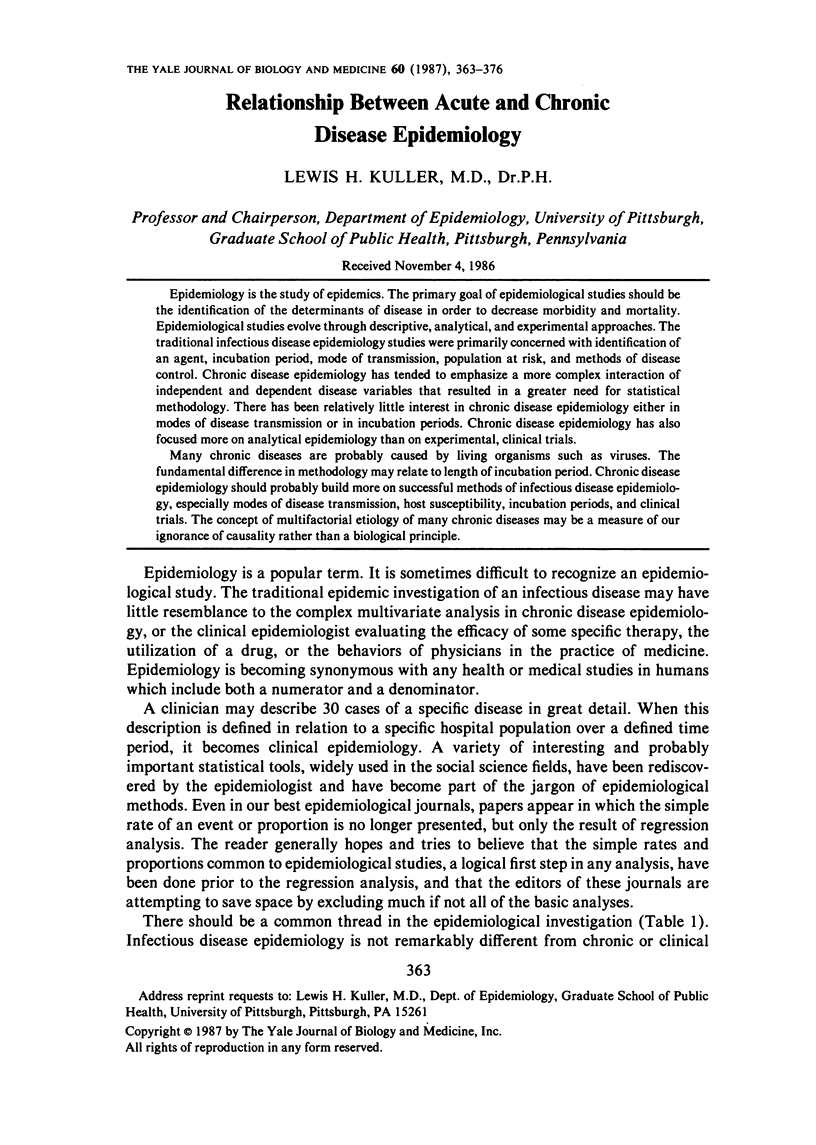
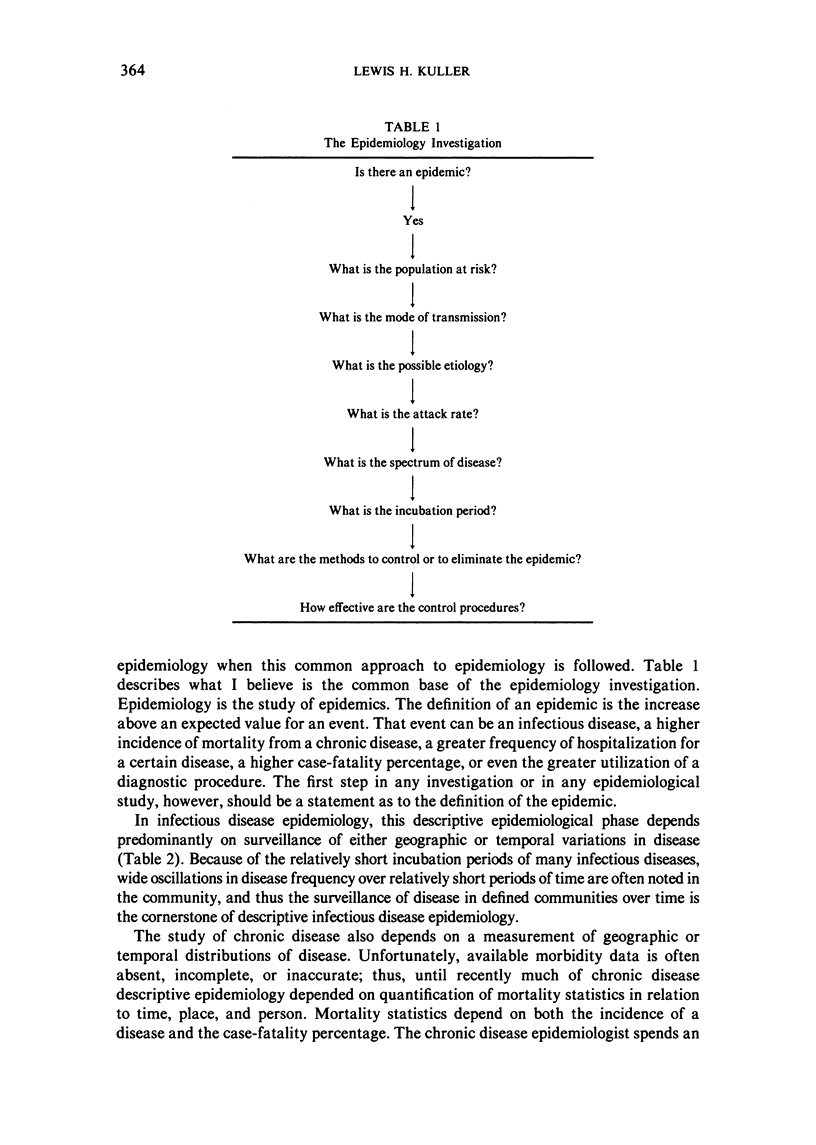
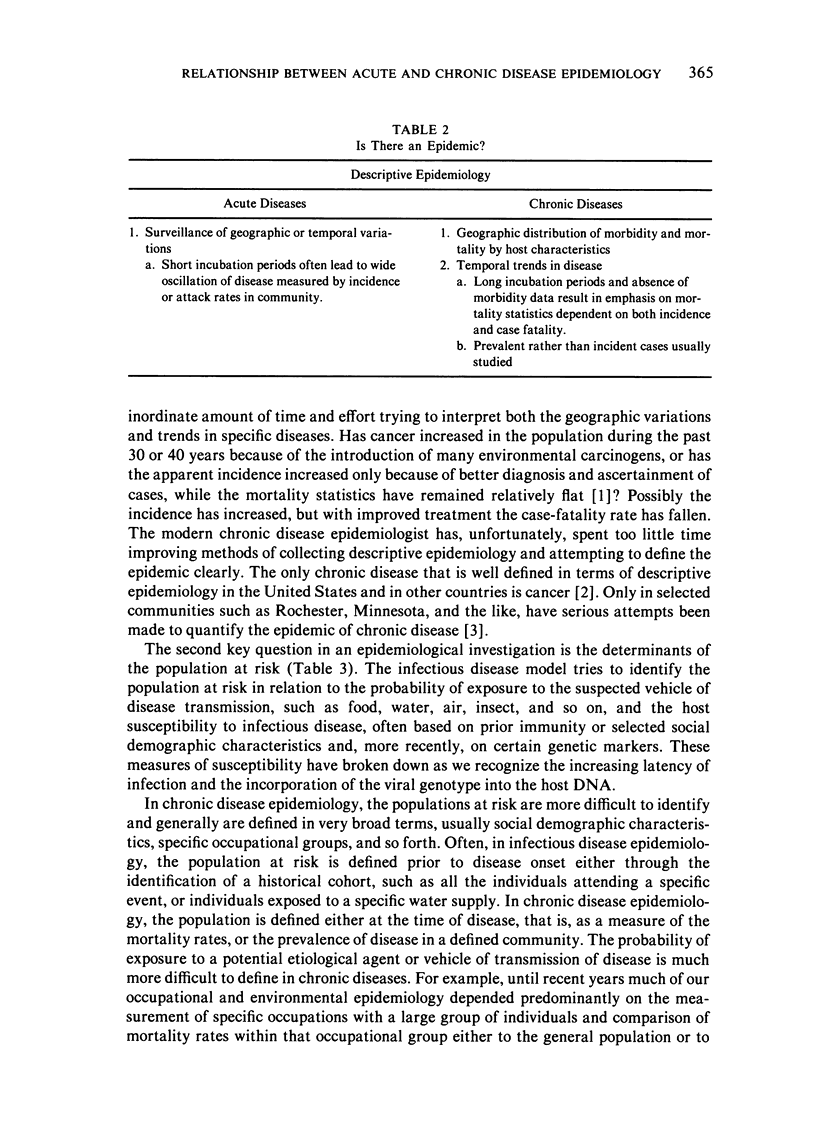
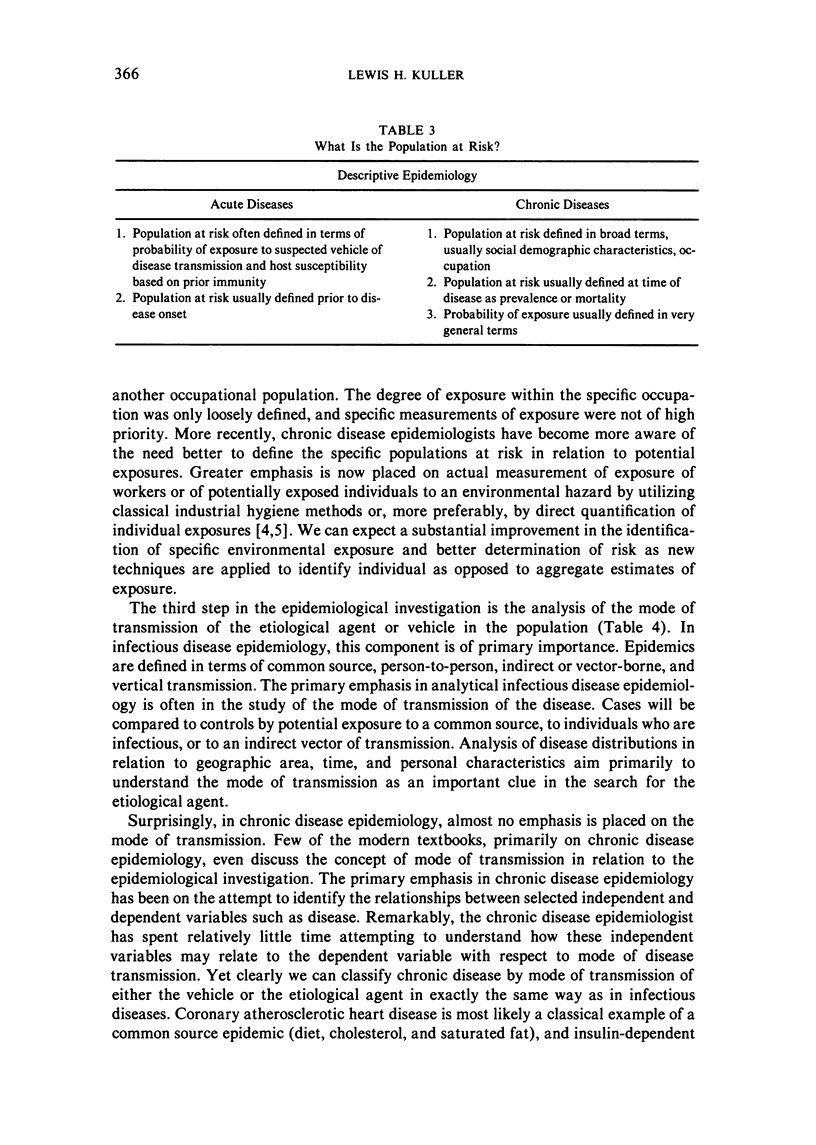
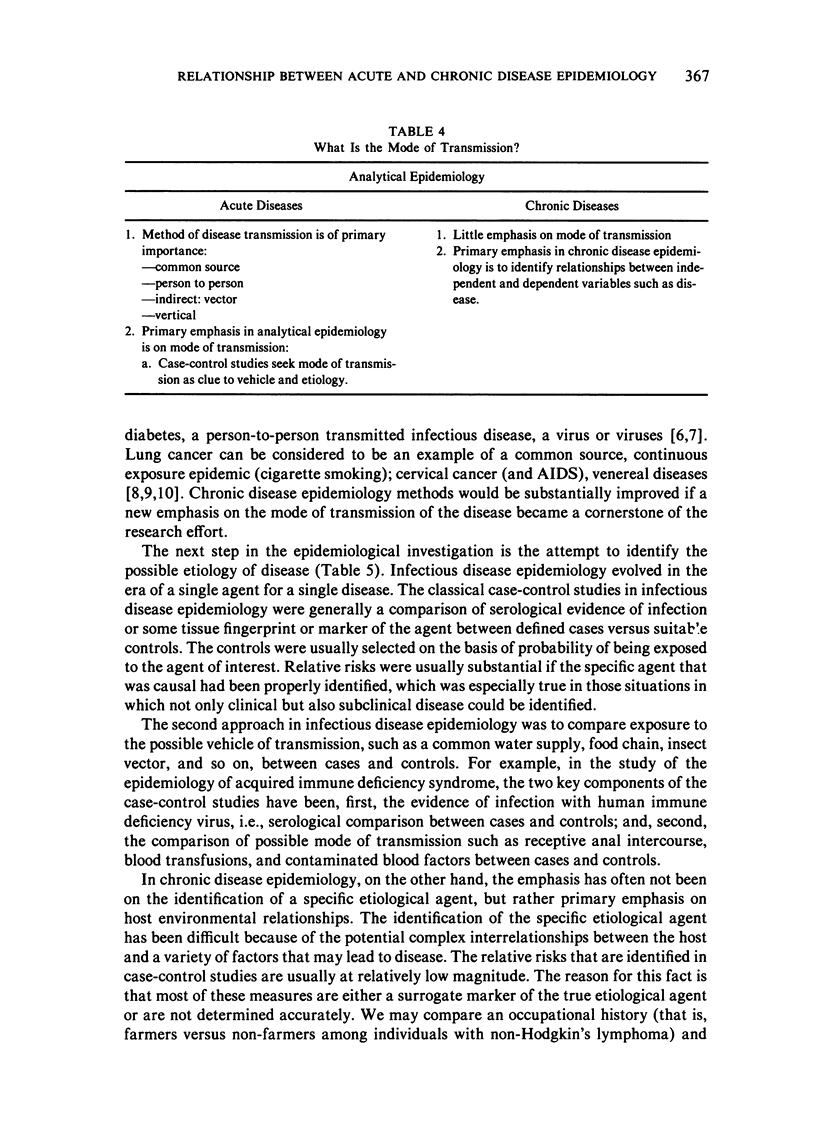
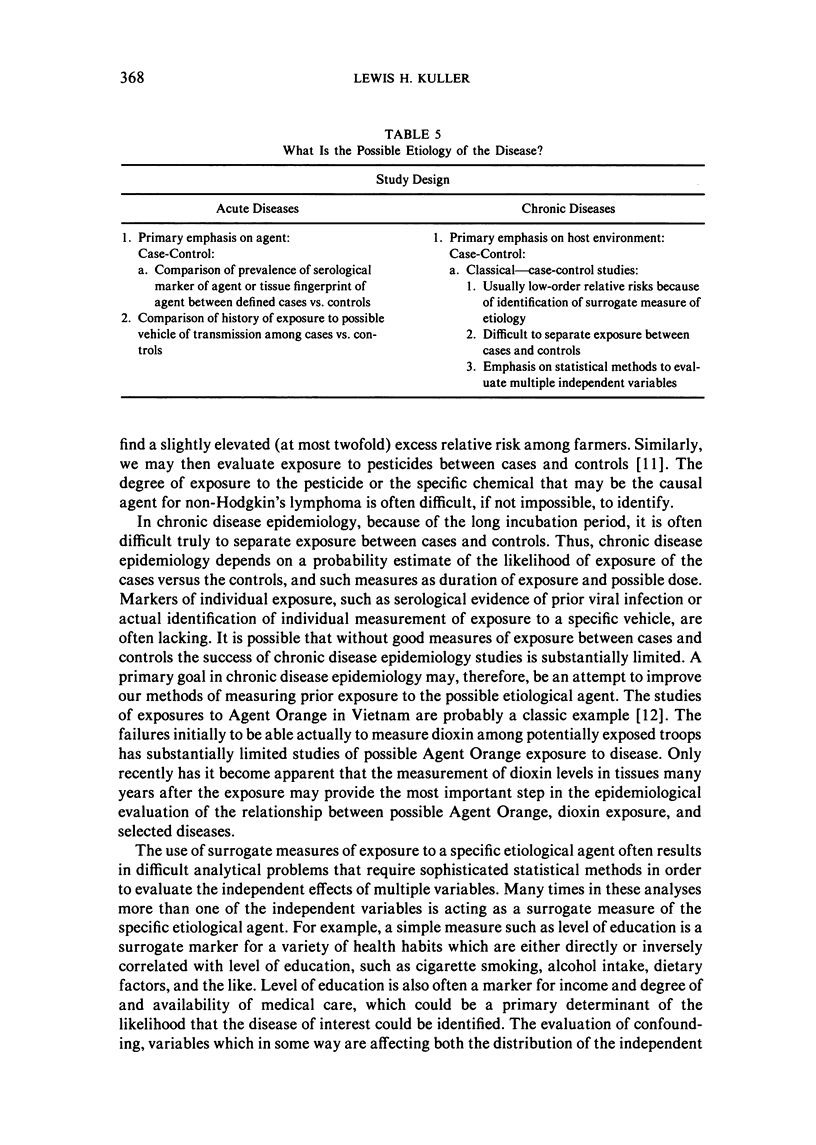
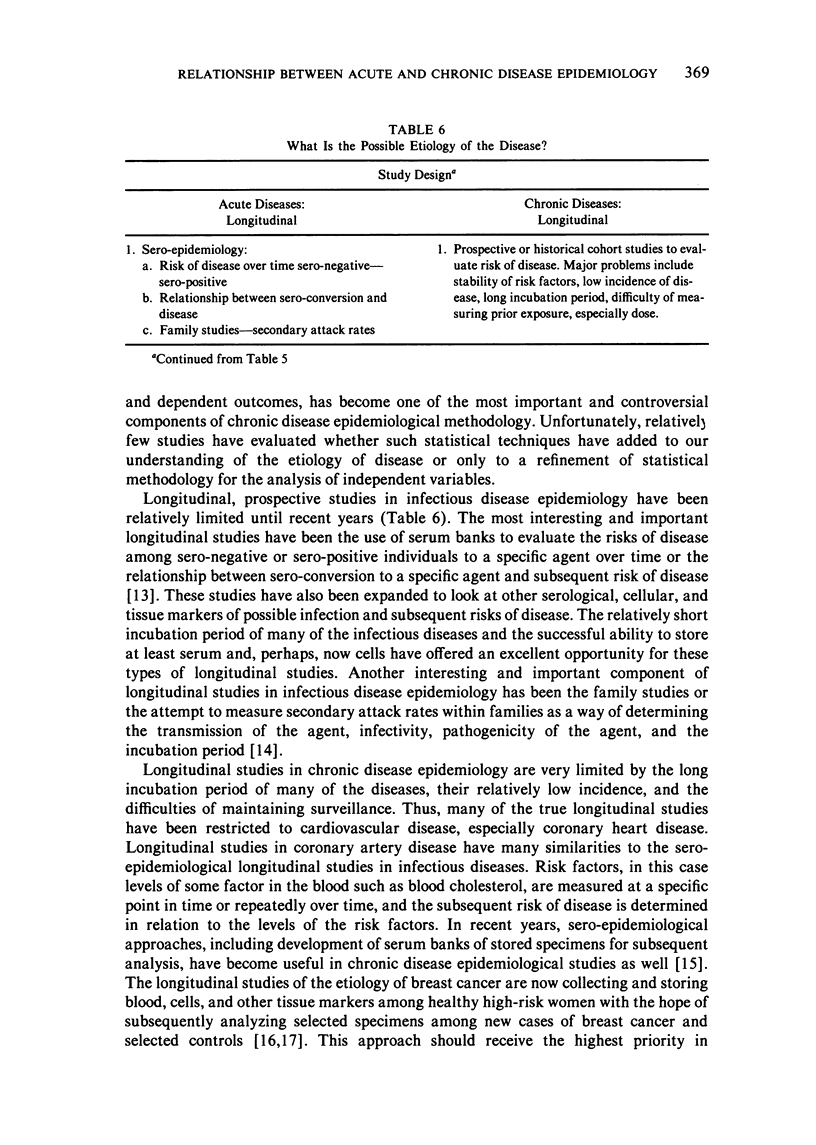
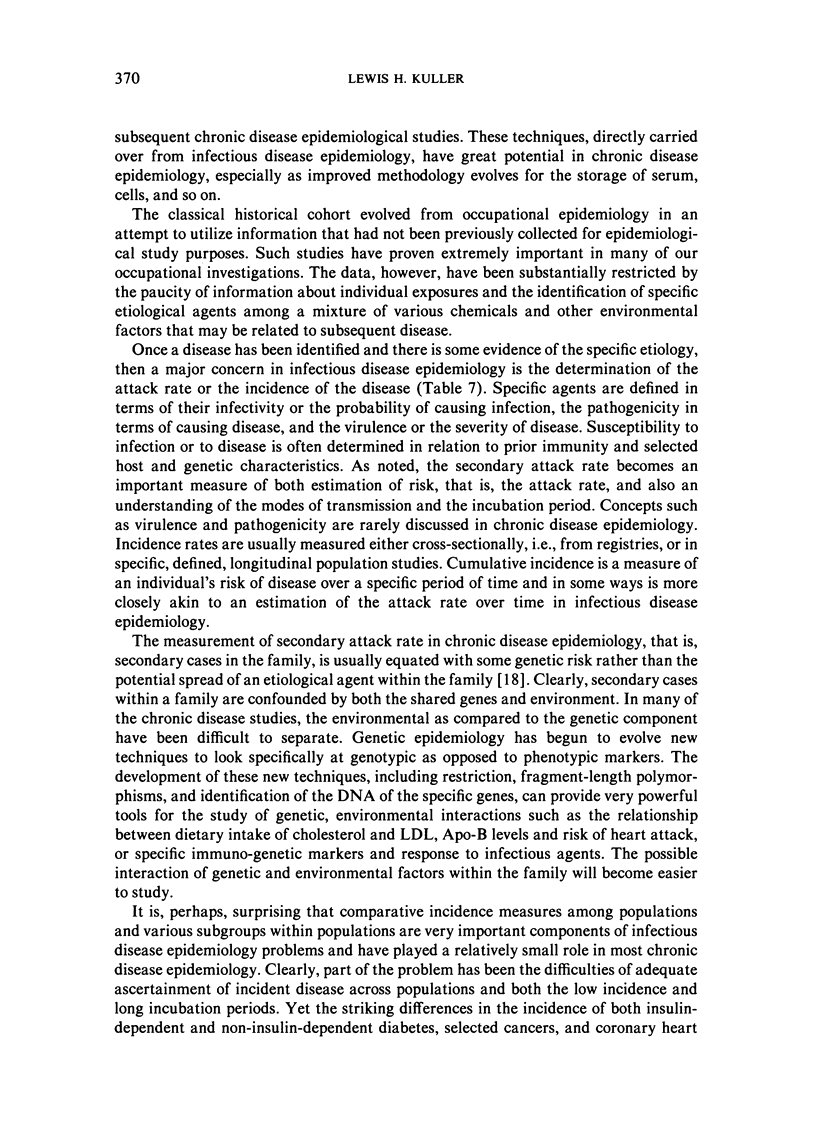
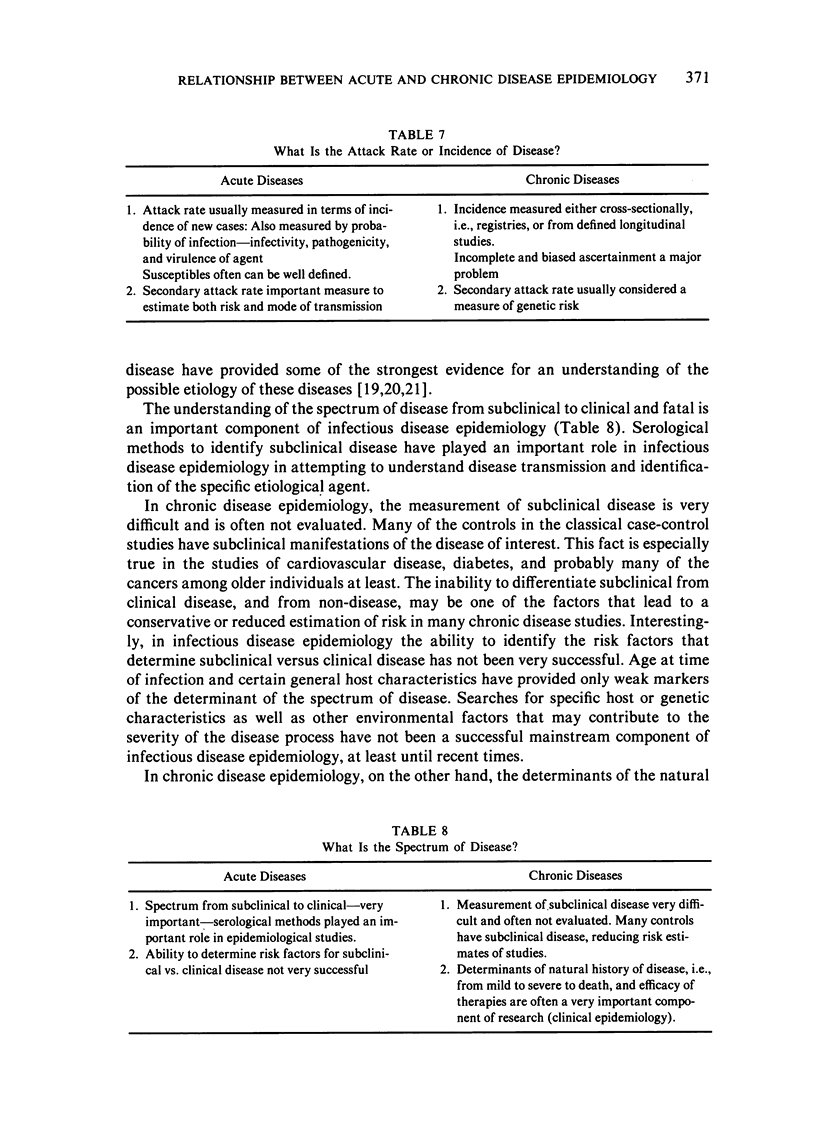
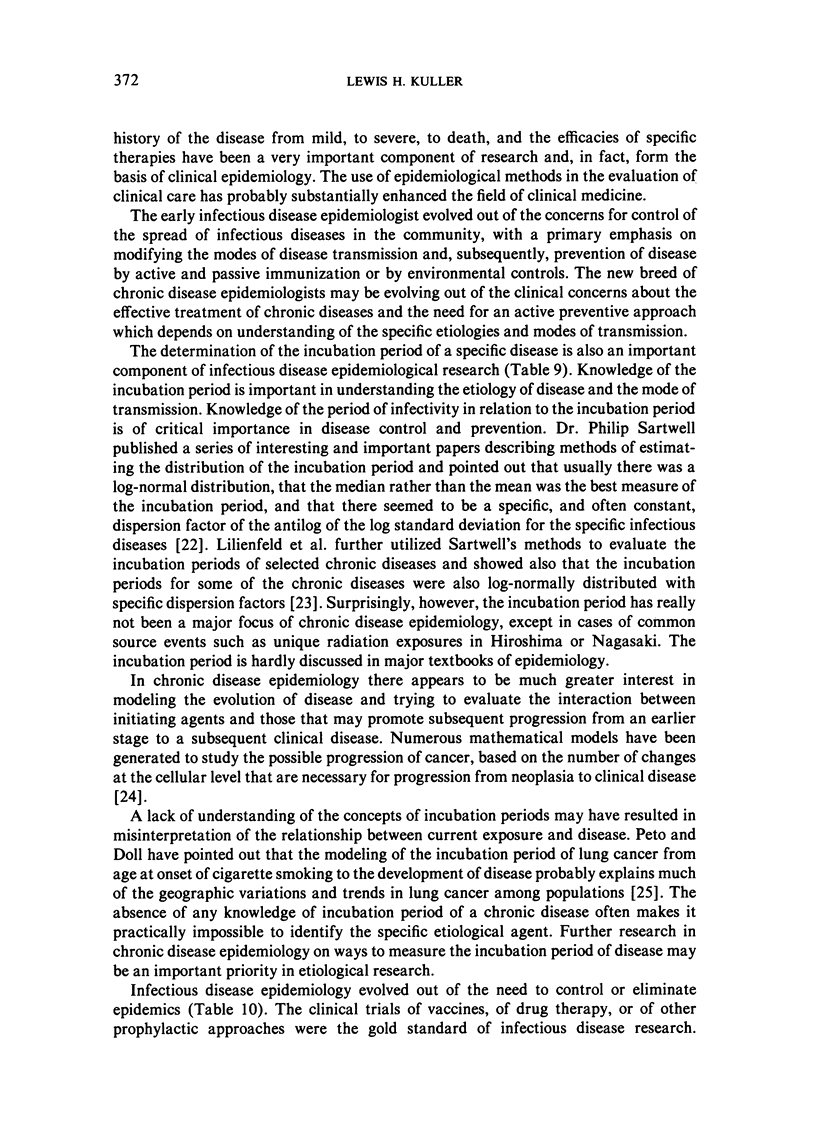
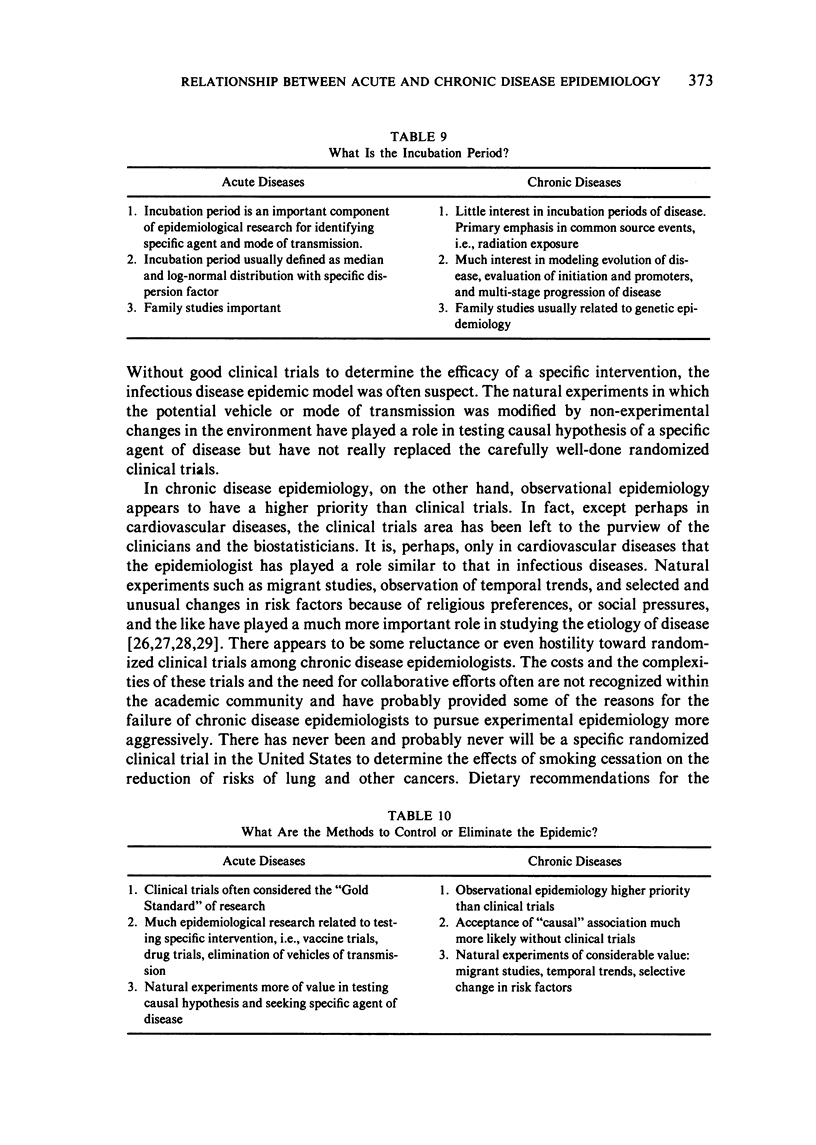
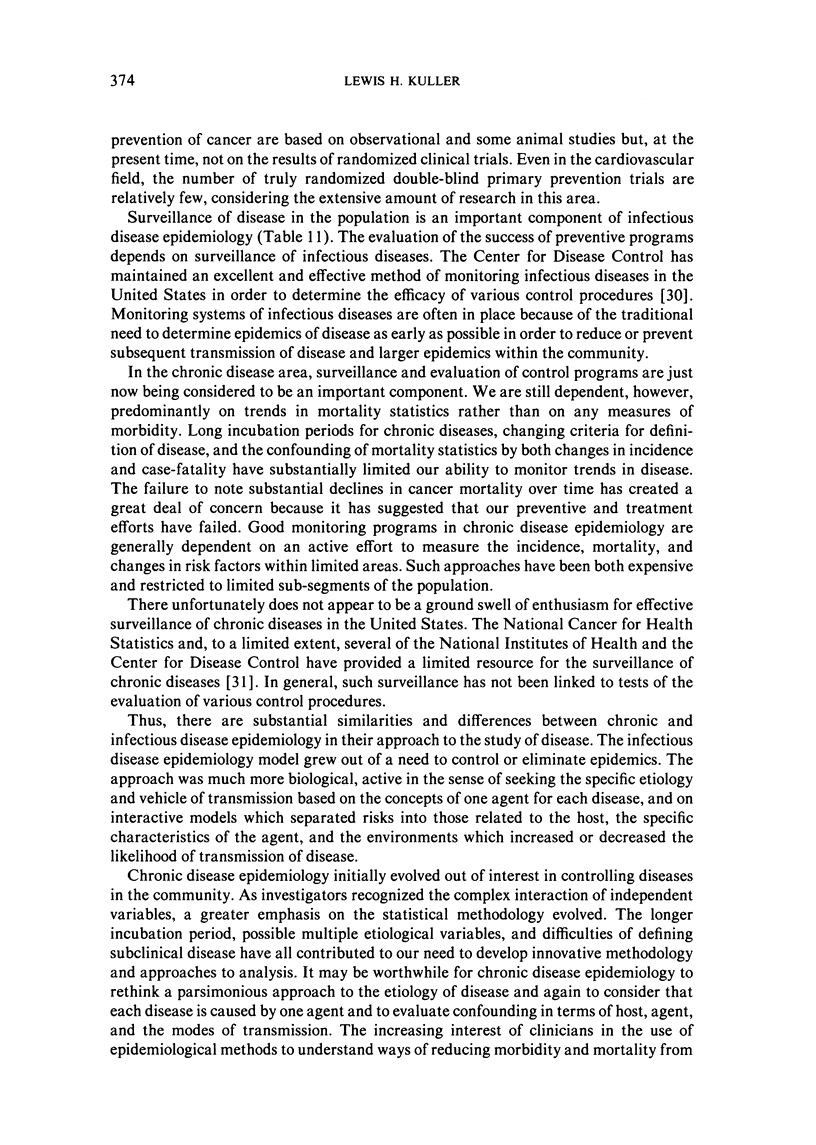
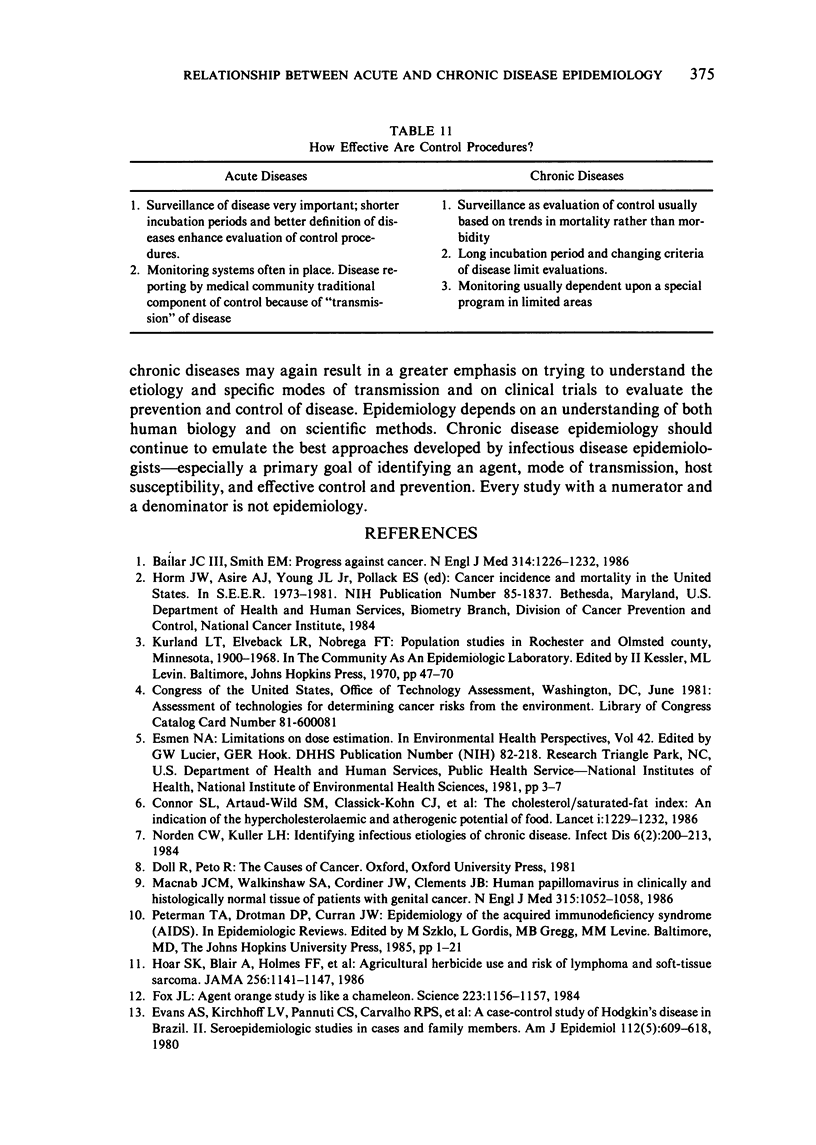
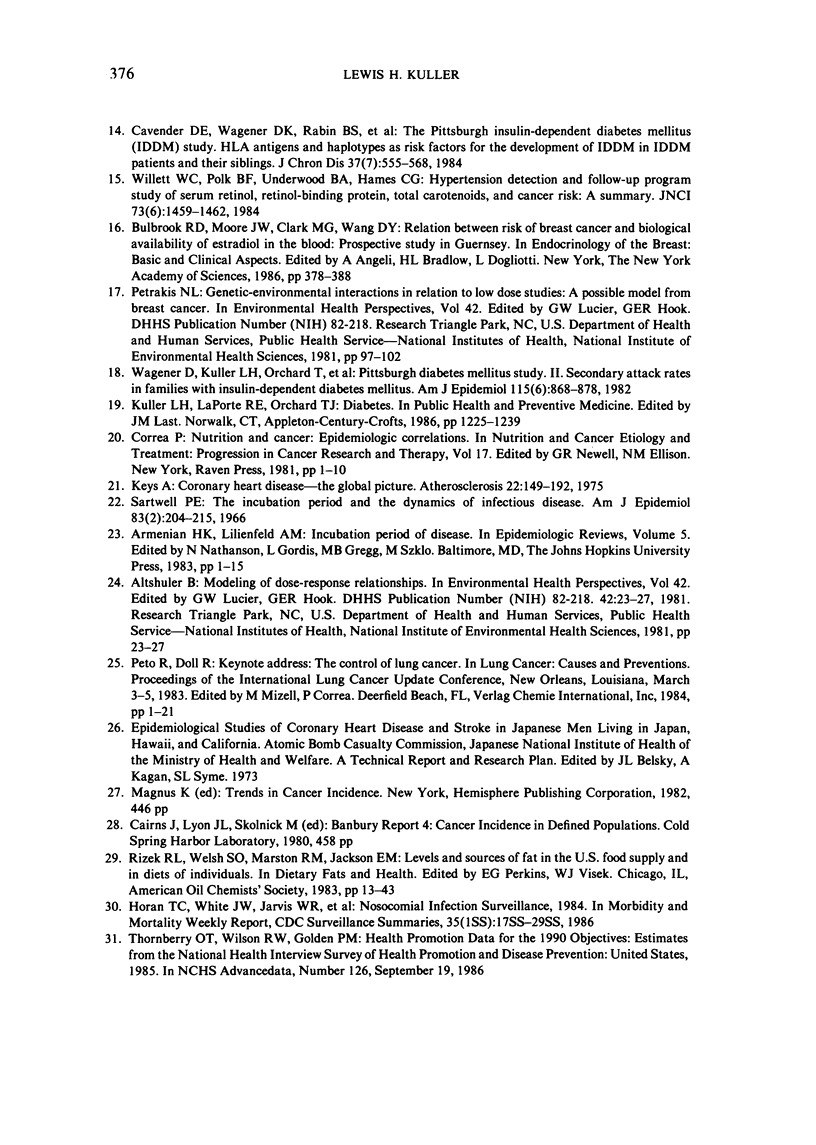
Selected References
These references are in PubMed. This may not be the complete list of references from this article.
- Altshuler B. Modeling of dose-response relationships. Environ Health Perspect. 1981 Dec;42:23–27. doi: 10.1289/ehp.814223. [DOI] [PMC free article] [PubMed] [Google Scholar]
- Bailar J. C., 3rd, Smith E. M. Progress against cancer? N Engl J Med. 1986 May 8;314(19):1226–1232. doi: 10.1056/NEJM198605083141905. [DOI] [PubMed] [Google Scholar]
- Bulbrook R. D., Moore J. W., Clark G. M., Wang D. Y., Millis R. R., Hayward J. L. Relation between risk of breast cancer and biological availability of estradiol in the blood: prospective study in Guernsey. Ann N Y Acad Sci. 1986;464:378–388. doi: 10.1111/j.1749-6632.1986.tb16017.x. [DOI] [PubMed] [Google Scholar]
- Cavender D. E., Wagener D. K., Rabin B. S., Becker D. J., Orchard T. J., Eberhardt M. S., LaPorte R. E., Drash A. L., Kuller L. H. The Pittsburgh Insulin-Dependent Diabetes Mellitus (IDDM) study. HLA antigens and haplotypes as risk factors for the development of IDDM in IDDM patients and their siblings. J Chronic Dis. 1984;37(7):555–568. doi: 10.1016/0021-9681(84)90006-7. [DOI] [PubMed] [Google Scholar]
- Connor S. L., Gustafson J. R., Artaud-Wild S. M., Flavell D. P., Classick-Kohn C. J., Hatcher L. F., Connor W. E. The cholesterol/saturated-fat index: an indication of the hypercholesterolaemic and atherogenic potential of food. Lancet. 1986 May 31;1(8492):1229–1232. doi: 10.1016/s0140-6736(86)91384-x. [DOI] [PubMed] [Google Scholar]
- Evans A. S., Kirchhoff L. V., Pannuti C. S., Carvalho R. P., McClelland K. E. A case-control study of Hodgkin's disease in Brazil II. Seroepidemiologic studies in cases and family members. Am J Epidemiol. 1980 Nov;112(5):609–618. doi: 10.1093/oxfordjournals.aje.a113033. [DOI] [PubMed] [Google Scholar]
- Fox J. L. Agent Orange study is like a chameleon. Science. 1984 Mar 16;223(4641):1156–1157. doi: 10.1126/science.6230720. [DOI] [PubMed] [Google Scholar]
- Hoar S. K., Blair A., Holmes F. F., Boysen C. D., Robel R. J., Hoover R., Fraumeni J. F., Jr Agricultural herbicide use and risk of lymphoma and soft-tissue sarcoma. JAMA. 1986 Sep 5;256(9):1141–1147. [PubMed] [Google Scholar]
- Horan T. C., White J. W., Jarvis W. R., Emori T. G., Culver D. H., Munn V. P., Thornsberry C., Olson D. R., Hughes J. M. Nosocomial infection surveillance, 1984. MMWR CDC Surveill Summ. 1986;35(1):17SS–29SS. [PubMed] [Google Scholar]
- Keys A. Coronary heart disease--the global picture. Atherosclerosis. 1975 Sep-Oct;22(2):149–192. doi: 10.1016/0021-9150(75)90001-5. [DOI] [PubMed] [Google Scholar]
- Macnab J. C., Walkinshaw S. A., Cordiner J. W., Clements J. B. Human papillomavirus in clinically and histologically normal tissue of patients with genital cancer. N Engl J Med. 1986 Oct 23;315(17):1052–1058. doi: 10.1056/NEJM198610233151703. [DOI] [PubMed] [Google Scholar]
- Norden C. W., Kuller L. H. Identifying infectious etiologies of chronic disease. Rev Infect Dis. 1984 Mar-Apr;6(2):200–213. doi: 10.1093/clinids/6.2.200. [DOI] [PubMed] [Google Scholar]
- Sartwell P. E. The incubation period and the dynamics of infectious disease. Am J Epidemiol. 1966 Mar;83(2):204–206. doi: 10.1093/oxfordjournals.aje.a120576. [DOI] [PubMed] [Google Scholar]
- Wagener D., Kuller L., Orchard T., LaPorte R., Rabin B., Drash A. Pittsburgh diabetes mellitus study. II. Secondary attack rates in families with insulin-dependent diabetes mellitus. Am J Epidemiol. 1982 Jun;115(6):868–878. doi: 10.1093/oxfordjournals.aje.a113374. [DOI] [PubMed] [Google Scholar]
- Willett W. C., Polk B. F., Underwood B. A., Hames C. G. Hypertension detection and follow-up program study of serum retinol, retinol-binding protein, total carotenoids, and cancer risk: a summary. J Natl Cancer Inst. 1984 Dec;73(6):1459–1462. [PubMed] [Google Scholar]


